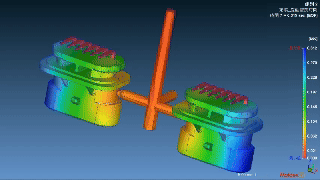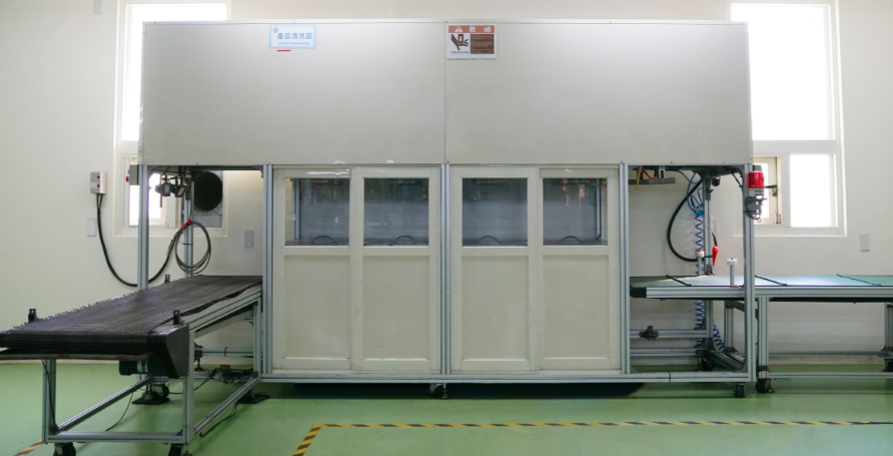The Introduction of Power Modules
Power modules are essential circuit elements that provide power to semiconductor devices while offering efficient cooling and connection to external circuits. These modules are mechanically and thermally optimized for easier assembly and more reliable operation. Common structures include Insulated Gate Bipolar Transistor (IGBT), Silicon Carbide (SiC), Metal-Oxide-Semiconductor Field-Effect Transistor (MOSFET), and Gallium Nitride (GaN) modules. The choice depends on the power range and frequency of operation. Power module makers design these components to meet the specific needs of various applications, from consumer electronics to renewable energy systems. Some of the world’s most recognized Power Electronics OEM suppliers trust Layana Company for the manufacturing of the power module housing, also known as power module enclosure, power module housings, power module shells, power module boxes, power module covers, power module containers, or even power module units, for IGBT, SiC, MOSFET, and GaN modules, including insert molding parts embedded during plastic injection, in addition to other components such as the baseplates.
The Differences Between IGBT, SiC, MOSFET, and GaN Power Modules
![Performance comparison of IGBT, SiC, MOSFET, and GaN power modules in switching speed and other key parameters]()
N. B.: This table is intended for reference purposes only, as it provides a simplified overview of standards and typologies. Layana offers this information as a general guide. A comprehensive professional evaluation is required to determine which type of power module best suits the specific needs of your project.
In the field of power electronics, SiC, MOSFET, GaN, and IGBT modules each have unique characteristics that make them suitable for different application scenarios, with distinct differences in performance, efficiency, and thermal properties.
SiC Modules: High-Performance Sports Cars with Strong Heat Resistance
SiC (Silicon Carbide) modules are like sports cars that maintain high speed while being fuel-efficient, featuring very high conduction efficiency and thermal performance. They exhibit low energy losses, making them ideal for achieving efficient performance during stable operation. Additionally, SiC modules have excellent thermal conductivity and can withstand temperatures up to 200°C or even higher, allowing them to operate reliably in high-temperature environments. This makes them well-suited for high-power and high-efficiency applications, such as electric vehicles and industrial equipment.
MOSFET Modules: Fast-Accelerating Cars with Limited Temperature Handling
MOSFET (Metal-Oxide-Semiconductor Field-Effect Transistor) modules can be compared to cars that accelerate very quickly, excelling in scenarios that require rapid start-stop operation. MOSFETs have low switching losses and high efficiency, making them particularly suitable for low to medium-frequency applications, such as DC-DC converters and power management modules. However, their thermal conductivity is lower, and they can only handle temperatures up to around 175°C, making them less stable in high-temperature applications compared to SiC or GaN. The technology behind MOSFETs is mature, and their relatively low cost makes them an ideal choice for many medium-power and frequency applications.
GaN Modules: Agile Miniature Race Cars for High-Frequency Applications and Space-Constrained Environments
GaN (Gallium Nitride) modules are like high-performance race cars that can respond quickly and are very agile. They have extremely low switching losses and very fast switching speeds, making them effective in high-frequency switching. Therefore, GaN modules excel in high-frequency applications, such as wireless charging, high-frequency power supplies, and RF amplifiers. In addition, GaN modules offer high efficiency and outstanding thermal characteristics, allowing them to operate at temperatures up to 200°C. They are also well-suited for the miniaturization of power modules, fitting space-constrained devices like consumer electronics. These properties make GaN modules highly competitive in applications requiring high performance and high power density.
IGBT Modules: Stable and Reliable Long-Distance Trucks with Moderate Efficiency and Thermal Conductivity
IGBT (Insulated-Gate Bipolar Transistor) modules can be likened to long-distance trucks that offer stable performance and decent efficiency. They have higher switching losses, but they are very effective during continuous large current conduction (on-state), making them suitable for applications involving high current with low switching frequency, such as industrial drives and large power supplies. The efficiency of IGBT modules is moderate, and their thermal performance is average, but they still play an indispensable role in large high-power applications, where stable operation is crucial.
Summary
- SiC Modules: High efficiency, heat-resistant (over 200°C), suitable for high-power, high-performance applications.
- MOSFET Modules: High efficiency, fast switching, suitable for low to medium-frequency applications, but with relatively lower temperature handling (up to 175°C).
- GaN Modules: High efficiency, excellent high-frequency switching performance, heat-resistant (up to 200°C), ideal for miniaturization and space-constrained applications.
- IGBT Modules: Moderate efficiency and thermal conductivity, suitable for stable applications involving high current and low switching frequency.
The Applications of Power Modules
![Power module housing featuring terminals and insert-molded parts for applications in EV, green energy, industry robots, telecom infrastructure, and HVAC systems]()
Taking IGBT as an example, the relevant applications are as follows:
- Semiconductor Industry: Power modules are commonly used for producing and utilizing power electronic components by integrating key devices like MOSFETs and IGBTs to drive efficiency and miniaturization, providing precise power control in manufacturing equipment to ensure production stability, optimizing energy usage to save costs, and addressing heat dissipation challenges due to increased power density by reducing heat generation and extending device lifespan.
- Electrification of Transportation: In the transportation sector, power modules are pivotal for Electric Vehicles (EVs), hybrid vehicles, and other new eco-friendly transportation solutions. Power modules optimize performance, extend range, and enhance charging efficiency. Indeed, the development of power modules is a great contributor to the success of new mobility solutions, and a great driver for quicker and broader adoption of new eco-friendly types of products and technologies. For instance, it is also a crucial element of charging and fast charging stations. By ensuring efficient energy conversion and power control, power modules contribute to reducing charging times, improving overall energy utilization, and therefore, accelerating the electrification of the world's vehicle fleet.
- Robotics and Automation: Power modules are essential in robotics for powering automatic robotic arms, machine learning-enabled robots and other industrial automation systems. They ensure efficient and reliable operation, crucial for maintaining precise control and high productivity.
- Renewable Energy and Sustainability: In renewable energy systems, such as solar panels, solar inverters, wind turbines, power modules are critical for efficiently converting, transmitting, and distributing clean energy. They support the global transition to a more sustainable future by improving the reliability and efficiency of renewable energy sources.
- HVAC Systems: In HVAC systems, power modules control and optimize the operation of heating, ventilation, and air conditioning units. The energy management of these devices and systems relies heavily on power modules and makes them more efficient and effective, reducing overall energy consumption.
![layana company power electronics green energy ev robot arm satellite]()
Especially IGBT module is a crucial component in modern power electronic systems, designed to handle high currents and voltages efficiently. Understanding what is a power module and its key components is essential for effective power module integration and the development of comprehensive power module solutions.
The Key Components of a Power Module
![Assembly illustration of an IGBT power module featuring cover, housing, power terminals, control terminals, chip, diode, DBC, solder, and baseplate.]()
Taking IGBT as an example, the power module structure is as follow:
- Wire: Ensures efficient electrical connections and signal transmission between internal components.
- Baseplate (also called cooling plate or base plate): Functions as a heat sink to dissipate heat generated by internal components.
- Chip (Diode): Acts as a rectifier and protects the IGBT from voltage spikes.
- Chip (IGBT): The core component responsible for power switching and controlling electrical power.
- Cover: Provides external protection and shields internal components.
- DBC (Direct Bonded Copper): Provides electrical insulation and thermal conductivity.
- Housing: Protects internal components from environmental factors like heat, moisture, and physical damage.
- Solder (DBC Bonding): Maintains structural integrity and electrical connectivity between the DBC and other components.
- Terminals:
-
-
- Power terminals: Connect to the external power supply.
- Control terminals: Receive control signals for module operation.
Layana's Capabilities of Manufacturing Power Modules
I. Power Module Housing
The power module housing is primarily composed of plastic and metal components, provides mechanical support and facilitates the integration of power modules into larger systems.
- Utilizes insert molding to develop and produce power modules housing with integrated metal terminals
- The power module cover is mainly produced through plastic injection, protects the internal components of the power module
- Other support materials
II. Baseplate or Cooling Plate
- Requires precision metal stamping to control characteristics such as warpage and protrusions, ensuring effective heat dissipation.
III. Terminals
- Power terminals are manufactured through custom tooling.
- Control terminals are also manufactured through custom tooling.
![control terminal]()
Control Terminal
![power terminal]()
Power Terminal
![Power module housing with insert molded terminals, busbars, connectors, and pins embedded in the plastic housing.]()
Our Capabilities of Insert Molding & Plastic Injection
| Item/Type | Vertical Injection Machinery | Horizontal Injection Machinery |
|---|
| Tonnage Range |
From 35T to 250T |
From 60T to 200T |
|
Maximum
Product Size
|
INCH: 8.5 x 11 x 6
MILLMETER: 216 x 279 x 150
|
|
Maximum
Product Weight
|
0.1g~500g |
| Preciseness |
Mold: ± 0.005mm
Product: ± 0.03~0.05mm
|
By combining our expertise in subassembly, insert molding and metal stamping, Layana provides comprehensive power module solutions for clients, catering to the needs of world-class companies in the power electronics industry, especially with the global demand for new energy, electric vehicles, and smart devices continually growing, the power module market is experiencing unprecedented opportunities. Layana will stay at the forefront of technological developments, investing more resources in researching and developing efficient, reliable, and energy-saving products to meet the evolving needs of our customers.

